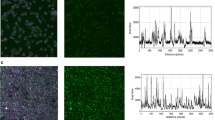Abstract
Infections with the human malaria parasite Plasmodium falciparum are characterized by cytoadherence of infected erythrocytes to the venular endothelium of several organs. Video microscopy studies have shown that at the end of the asexual life of P. falciparum, the residual body containing haemozoin is released to the extracellular environment along with merozoites, leaving behind an infected erythrocyte “ghost”. It is possible that these infected erythrocyte “ghosts” could remain sequestered within the blood vessels of patients infected with P. falciparum even after merozoites have been released from infected erythrocytes. In this study an in vitro cytoadherence assay was developed to show that infected erythrocyte “ghosts” can interact with C32 melanoma cells. Adherent infected erythrocyte “ghosts” contain some of the subcellular compartments of the malaria-infected red blood cell such as the tubo-vesicular membrane network and remnants of the parasitophorous vacuolar membrane, but lack haemozoin.
Similar content being viewed by others
Author information
Authors and Affiliations
Additional information
Received: 28 August 2000 / Accepted: 13 September 2000
Rights and permissions
About this article
Cite this article
Winograd, E., Robles, W., Caldas, M. et al. Cytoadherence of the malaria-infected erythrocyte membrane to C32 melanoma cells after merozoites are released from parasitized infected cells. Parasitol Res 87, 264–268 (2001). https://doi.org/10.1007/PL00008576
Issue Date:
DOI: https://doi.org/10.1007/PL00008576




